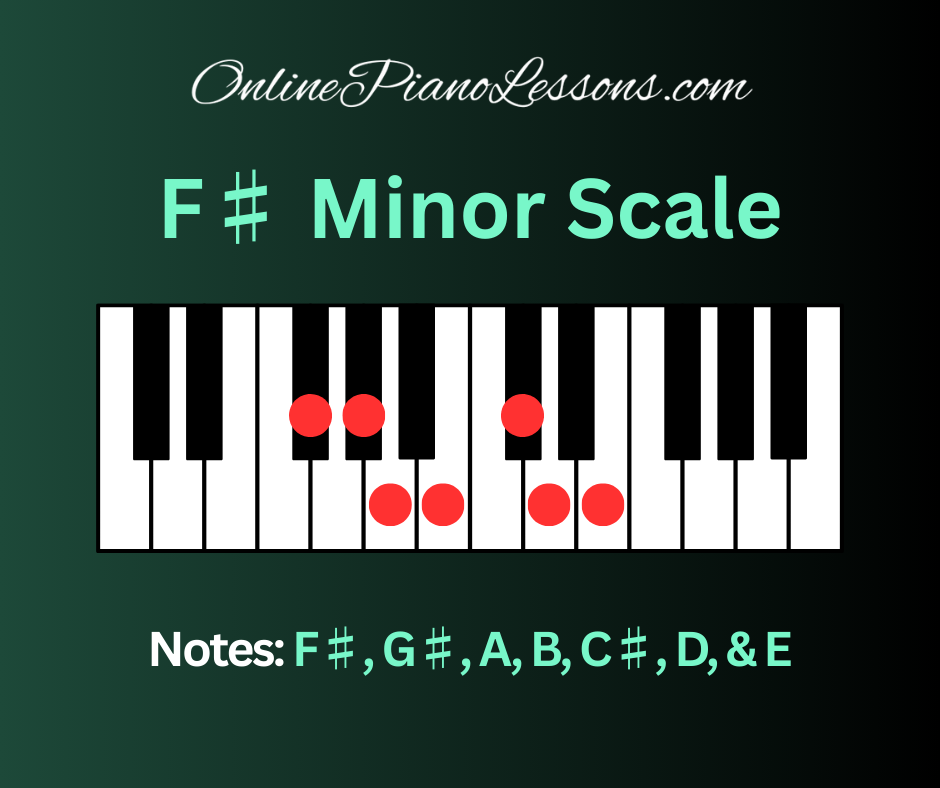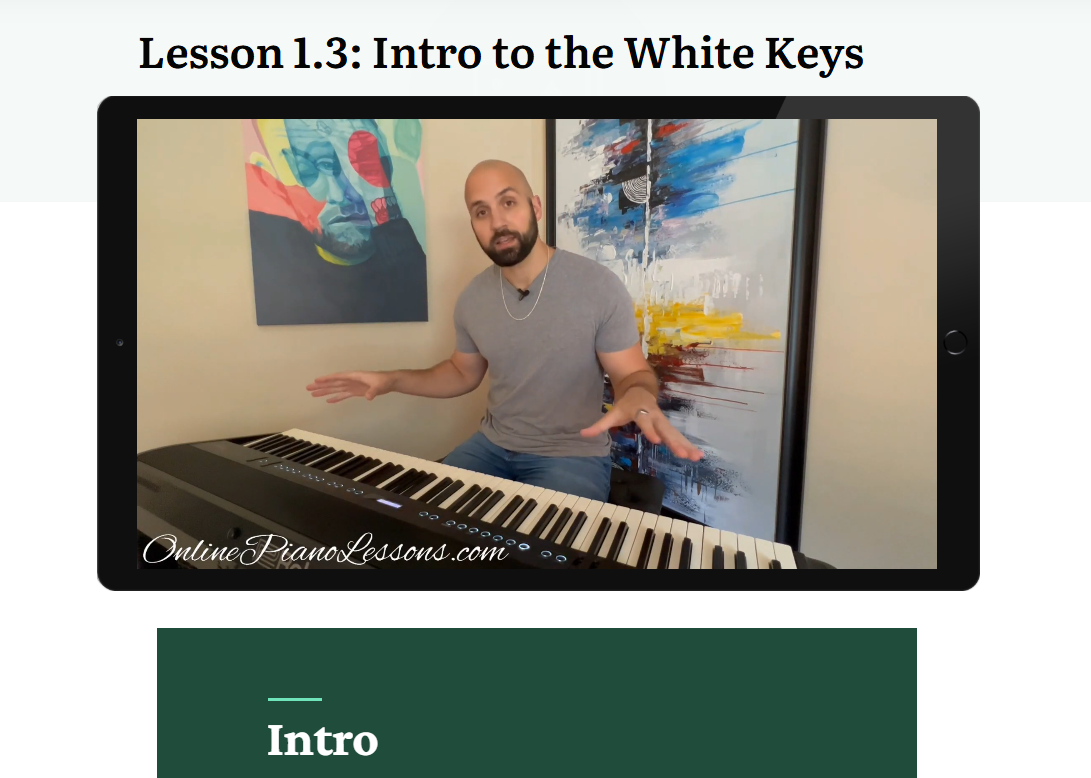
The F sharp minor scale is one of the most expressive and emotionally rich scales you can explore on the piano. Known for its dark, introspective, and slightly mysterious tone, the F sharp minor scale appears in classical masterpieces, modern film scores, and contemporary music alike. Learning this scale not only strengthens your technical skill but also deepens your understanding of minor tonality across the piano.
This definitive guide will teach you everything about the F sharp minor scale—what it is, how it works, how to play it, what it sounds like, and how to apply it musically. Whether you’re a beginner or an advancing player, you’ll find everything you need to fully master the F# minor scale on the piano.
What Is the F Sharp Minor Scale?
The F sharp minor scale is the natural minor scale that begins on the note F#. In music theory, it’s known for having three sharps in its key signature: F#, C#, and G#. This gives the F# minor scale a consistent structure across the piano, making it easy to identify and visually map out on the keyboard.
The natural F sharp minor scale consists of the following notes:
- F#
- G#
- A
- B
- C#
- D
- E
- F# (octave)
Like all natural minor scales, the interval pattern is:
Whole – Half – Whole – Whole – Half – Whole – Whole
Understanding this pattern helps you construct the F# minor scale starting on any instrument, but it is especially intuitive on the piano, where whole and half steps are easy to visualize.
How to Find the F Sharp Minor Scale on the Piano
Finding the F sharp minor scale on the piano is straightforward once you know where F# is located. On the keyboard, F# is the black key immediately to the right of F.
To play the F# minor scale, begin on this F# and follow the interval pattern upward:
- Start on F#
- Whole step to G#
- Half step to A
- Whole step to B
- Whole step to C#
- Half step to D
- Whole step to E
- Whole step to F# (octave)
Seeing the pattern physically laid out on the piano helps reinforce the scale’s shape and sound, making the F sharp minor scale easier to learn and memorize.
The Three Forms of the F Sharp Minor Scale
Just like all minor keys, the F sharp minor scale has three different forms: natural, harmonic, and melodic. Each version has a slightly different purpose but starts with the same base notes.
1. F Sharp Natural Minor Scale
This is the foundational version used for basic scale practice and composition.
Notes: F# – G# – A – B – C# – D – E – F#
The natural F# minor scale has a moody, darker tone that fits emotional or dramatic music on the piano.
2. F Sharp Harmonic Minor Scale
To form the harmonic minor, raise the 7th note (E → E#).
Notes: F# – G# – A – B – C# – D – E# – F#
This gives the F sharp minor scale that iconic “classical” tension between the leading tone (E#) and the tonic (F#). On the piano, this creates a beautifully haunting sound.
3. F Sharp Melodic Minor Scale
Ascending, raise both the 6th and 7th degrees. Descending, revert to natural minor.
Ascending:
F# – G# – A – B – C# – D# – E# – F#
Descending:
F# – E – D – C# – B – A – G# – F#
The melodic form gives the F# minor scale a smoother, more lyrical quality—wonderful for expressive piano phrasing.
How the F Sharp Minor Scale Works in Music
Understanding how the F sharp minor scale functions harmonically helps you recognize common chord progressions and melodic patterns in music.
The primary chords derived from the F# minor scale are:
- i (F# minor): F#–A–C#
- iv (B minor): B–D–F#
- v (C# minor): C#–E–G#
In the harmonic form, the v chord becomes V major (C#–E#–G#) because the 7th scale degree is raised.
Secondary chords include:
- III (A major)
- VI (D major)
- VII (E major or E# diminished depending on form)
Understanding these chords helps you hear how melodies fit over harmony, especially when playing the F sharp minor scale across the piano.
What the F Sharp Minor Scale Sounds Like
The F sharp minor scale is often described as:
- Emotional
- Brooding
- Dramatic
- Cinematic
- Introspective
- Warm yet shadowy
Composers use the F# minor scale to express longing, tension, mystery, and deep emotion. On the piano, its combination of black and white keys gives it a smooth, satisfying feel under the fingers, especially during scale runs or arpeggios.
Famous classical pieces in this key include:
- Chopin’s Prelude in F# Minor
- Beethoven’s Piano Sonata No. 29 (Hammerklavier) — slow movement
- Scriabin’s Etude in F# Minor, Op. 8 No. 2
Each showcases the dramatic beauty of the F sharp minor scale.
How to Practice the F Sharp Minor Scale on the Piano
To master the F# minor scale, consistent, deliberate practice is essential. Here are the best strategies for learning it on the piano:
Use Proper Fingering
Correct fingering prevents tension and helps you build muscle memory.
Right Hand (one octave):
2 – 3 – 4 – 1 – 2 – 3 – 4 – 1
Left Hand (one octave):
4 – 3 – 2 – 1 – 3 – 2 – 1 – 4
Using the same fingering every time you play the F sharp minor scale helps your hands move fluidly across the piano.
Practice Slowly
Force your fingers to stay controlled, even and relaxed.
Use a Metronome
Start slow, then increase the speed in small increments. This ensures accuracy and consistency.
Practice Hands Separately Before Combining
This builds independence and precision on the piano.
Include Arpeggios
Arpeggios based on the F# minor scale strengthen finger agility and hand coordination.
Common Mistakes When Learning the F Sharp Minor Scale
Learning the F sharp minor scale is rewarding, but beginners often run into predictable challenges:
- Skipping the E natural vs. E# distinction
- Playing with inconsistent fingering
- Confusing harmonic and melodic forms
- Flattening the wrist too much over black keys
- Practicing too fast too soon
Avoiding these mistakes will drastically improve your confidence when playing the F# minor scale on the piano.
Musical Uses for the F Sharp Minor Scale
The F sharp minor scale is extremely versatile. Here are some ways musicians use it:
- Writing emotional film themes
- Creating dramatic chord progressions
- Improvising over minor-key ballads
- Composing reflective piano solos
- Building moody soundscapes in pop or electronic music
- Enhancing melodic tension in classical compositions
Understanding these uses helps you appreciate how expressive the F# minor scale truly is.
Why Pianists Should Master the F Sharp Minor Scale
Mastering the F sharp minor scale gives pianists several advantages:
- It strengthens black-key navigation
- It builds confidence with sharps
- It improves understanding of minor harmony
- It prepares you for advanced repertoire
- It expands your improvisation toolkit
- It improves overall technique and dexterity
If you’re developing serious skill on the piano, the F# minor scale is essential.
FAQ
Is the F sharp minor scale hard to play on the piano?
It’s moderately challenging, but with proper fingering and slow practice, the F sharp minor scale becomes comfortable on the piano.
How many sharps are in the F# minor scale?
The natural F sharp minor scale has three sharps: F#, C#, and G#.
Do I need to learn all three forms of the scale?
Yes. Each form of the F# minor scale has its own musical purpose and teaches different technical skills on the piano.
What chords come from the F sharp minor scale?
The primary chords are F# minor, B minor, and C# minor, with variations depending on scale form.
Why does the harmonic form use E# instead of F?
E# maintains the correct interval structure. Even though E# sounds like F on the piano, its theoretical spelling matters.





 Hi, I'm Thomas, Pianist Composer,
Hi, I'm Thomas, Pianist Composer,  I love playing piano, creating new melodies and songs, and further developing my online piano course and making updates/additions to my site OnlinePianoLessons.com!
I love playing piano, creating new melodies and songs, and further developing my online piano course and making updates/additions to my site OnlinePianoLessons.com!  Now that is what I call fun!
Now that is what I call fun!





